At eight years old, Nico Kalaheo Lopez has already been break dancing for half of his young life.
What does he love about it?
“Everything,” he said.
Each Wednesday and Friday, Nico works on his top rocks and freezes through programming with the Manitoba Breaking Alliance.
He comes by his passion honestly. His father is b-boy Flexum Lopez – a coach with the alliance and a former world champion himself.
“He used to travel all around the world, but he had to give up because he had to be a dad, so he gave it up for us, so that’s why I wanted to break dance like him and become a world champion like him,” Nico said.
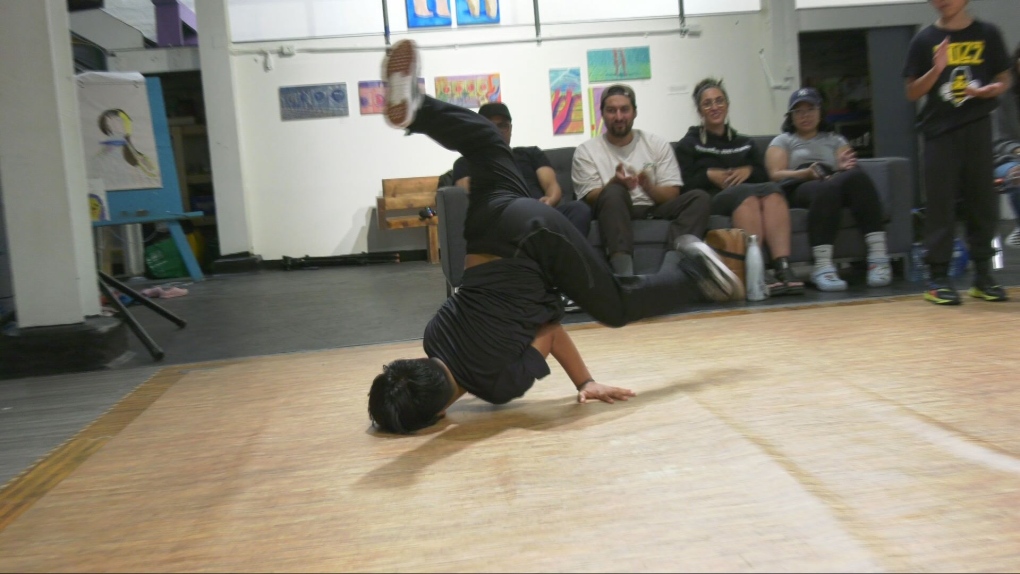 Nico Kalaheo Lopez practices breaking at Graffiti Art Programming on July 3, 2024. (Daniel Halmarson/CTV News Winnipeg)
Nico Kalaheo Lopez practices breaking at Graffiti Art Programming on July 3, 2024. (Daniel Halmarson/CTV News Winnipeg)
Nico now has a new breaking aspiration to add to his list.
This summer’s Paris Games marks the first year breakers will compete at the Olympics. It became an official Olympic sport in 2020.
The sport’s path to the Olympics was shepherded by the World DanceSport Federation, after being tested at the Summer Youth Olympic Games in Buenos Aires in 2018.
Breaking since the age of 12, Flexum never thought he’d see his passion on the Olympic stage.
“It’s gotten a lot farther than where you see it on a corner of the street, or someone with a hat out trying to make a little dollar or two,” he said.
“It’s gotten to the point where it’s become not only a well-respected art, but at the same time, a well-respected sport.”
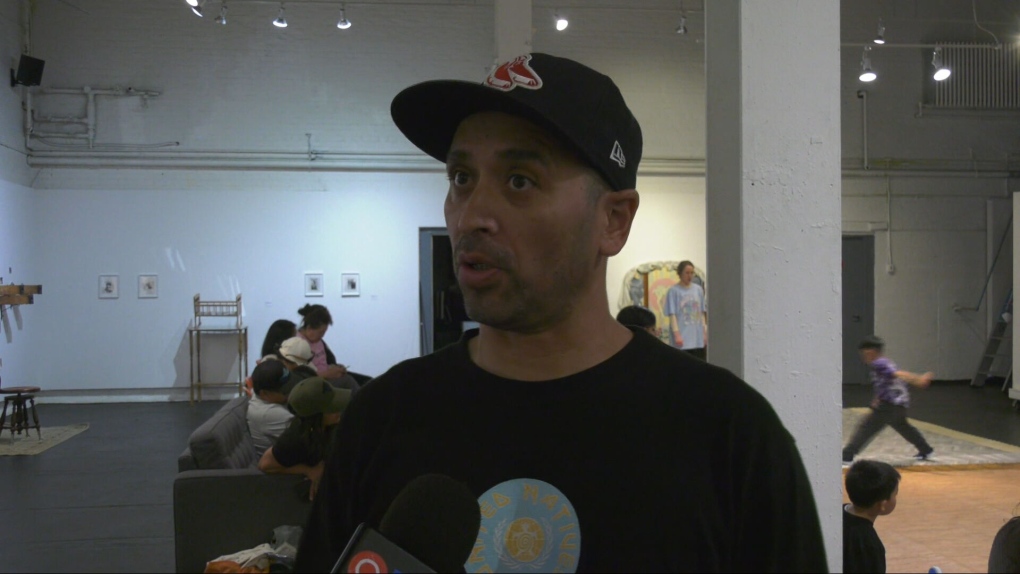 Manitoba Breaking Alliance co-founder Flexum Lopez is pictured during a July 3, 2024 interview at Graffiti Art Programming. (Daniel Halmarson/CTV News Winnipeg)
Manitoba Breaking Alliance co-founder Flexum Lopez is pictured during a July 3, 2024 interview at Graffiti Art Programming. (Daniel Halmarson/CTV News Winnipeg)
Charting breaking’s history and popularity
Breaking is characterized as an urban dance style made up of a series of acrobatic movements, stylish footwork and the key role played by the DJ and master of ceremonies during the battles.
Many credit its origins to a DJ named Kool Herc. He is said to have MC’d his sister’s dance party in the rec room of an apartment building in the Bronx in August of 1973.
Herc was tasked with playing music, and he debuted a new DJing technique, which extended a song’s percussive breaks by using two turntables. It inspired partygoers to break or start dancing.
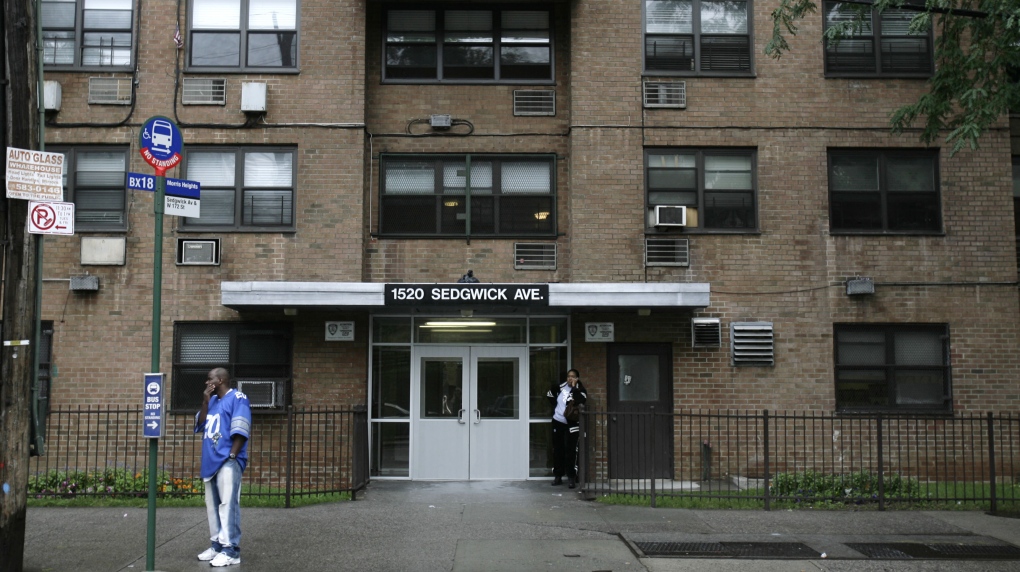 FILE – The front of 1520 Sedgwick Ave. is seen in the Bronx section of New York, July 23, 2007. Before it was a global movement, it was simply an expression of life and struggle: a culture that was synonymous with hardship and suffering, but also grit, resilience and creativity. Clive Campbell, also known as DJ Kool Herc, threw a back-to-school party with his younger sister in the recreation room of the apartment building one August day in 1973. Herc introduced the attendees to “the break” – extending the musical beat between verses? to allow for longer periods of dancing. (AP Photo/Seth Wenig, file)
FILE – The front of 1520 Sedgwick Ave. is seen in the Bronx section of New York, July 23, 2007. Before it was a global movement, it was simply an expression of life and struggle: a culture that was synonymous with hardship and suffering, but also grit, resilience and creativity. Clive Campbell, also known as DJ Kool Herc, threw a back-to-school party with his younger sister in the recreation room of the apartment building one August day in 1973. Herc introduced the attendees to “the break” – extending the musical beat between verses? to allow for longer periods of dancing. (AP Photo/Seth Wenig, file)
The form evolved, with breakers challenging each other, trying to one-up their competitors with style and moves.
The friendly battles became formal ones, with international competitions first popping up in the ‘90s.
Breaking onto the Olympic stage
Fast forward to today, the breaking competition at the Paris Games will be made up of two events – one for men and one for women, where 16 b-boys and b-girls will face off in solo battles.
According to the Olympics, competitors will use a combination of power moves, including windmills, the 6-step, and freezes, as they adapt their style and improvise to the beat played by a DJ.
Judges will then vote on who should advance to the next round and ultimately, take home the hardware.
The breaking competition is set for Aug. 9 and 10.
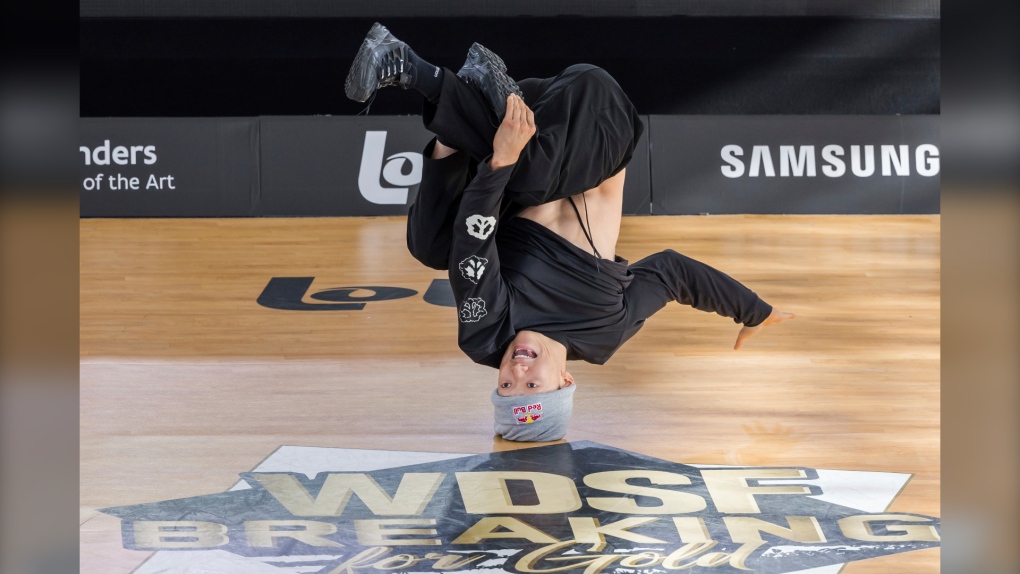 Canada’s Philip Kim, known as B-Boy Phil Wizard, competes during the World Breaking Championships in Leuven, Belgium, Sunday, Sept 24, 2023. For much of the last year, breakers from around the world have been competing for a shot at Olympic gold when the competitive hip-hop dance form makes its debut at the Paris Games in 2024. Whoever is crowned the top b-boy and b-girl in Belgium will directly qualify to the games next summer. (AP Photo/Geert Vanden Wijngaert)
Canada’s Philip Kim, known as B-Boy Phil Wizard, competes during the World Breaking Championships in Leuven, Belgium, Sunday, Sept 24, 2023. For much of the last year, breakers from around the world have been competing for a shot at Olympic gold when the competitive hip-hop dance form makes its debut at the Paris Games in 2024. Whoever is crowned the top b-boy and b-girl in Belgium will directly qualify to the games next summer. (AP Photo/Geert Vanden Wijngaert)
Breaking through the Prairies
Flexum has been hard at work here in the Prairies to grow the breaking community. He co-founded the alliance in 2023 as a way to give local youth an opportunity to perform and learn.
He was eventually contacted by Breaking Canada, a non-profit aimed at providing services and resources to the breaking community to help it grow.
The organizations partnered up to offer qualifying events for the 2026 Summer Youth Olympic Games in Dakar, West Africa.
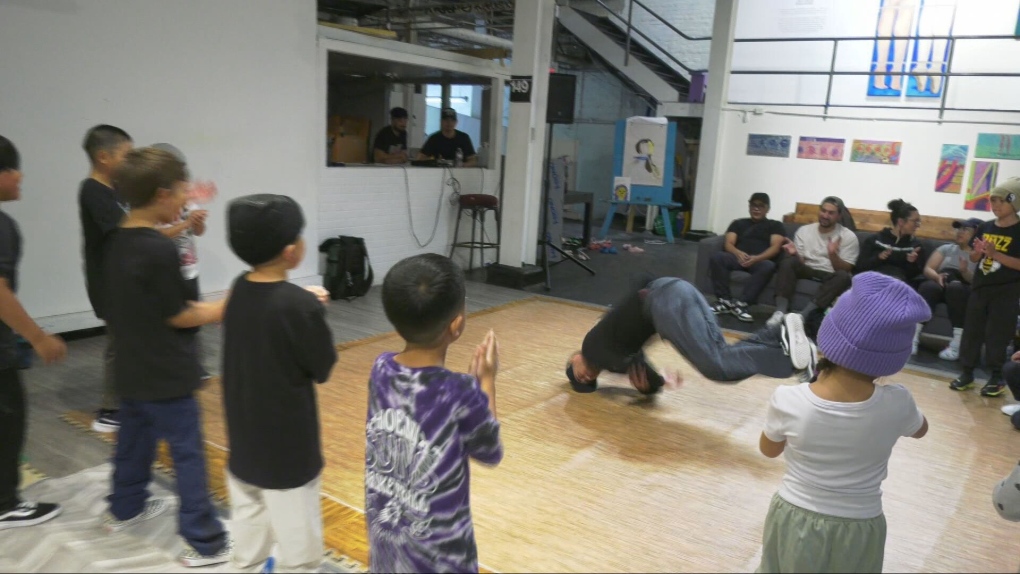 Flexum Lopez performs for Manitoba Breaking Alliance students on July 3, 2024. (Daniel Halmarson/CTV News Winnipeg)
Flexum Lopez performs for Manitoba Breaking Alliance students on July 3, 2024. (Daniel Halmarson/CTV News Winnipeg)
“Us collaborating together is to get this goal of having a Canadian representative, and not only just the Youth Olympics, but the future Olympics, anything that we have coming up, because there’s going to be more opportunities.”
Vancouver’s Philip Kim, who competes as b-boy Phil Wizard, is set to make Canadian sports history this summer as the country’s first-ever Olympic breaking athlete.
 Canada’s Philip Kim (B-Boy Phil Wizard) competes against Jeff Louis (B-Boy Jeffro) of the United States in the B-boys gold medal finals for breaking at the Pan Am Games in Santiago, Chile on Saturday, Nov. 4, 2023. THE CANADIAN PRESS/Frank Gunn
Canada’s Philip Kim (B-Boy Phil Wizard) competes against Jeff Louis (B-Boy Jeffro) of the United States in the B-boys gold medal finals for breaking at the Pan Am Games in Santiago, Chile on Saturday, Nov. 4, 2023. THE CANADIAN PRESS/Frank Gunn
Apart from shining a larger spotlight on incredible breakers like Kim, Flexum believes the Paris Games will provide more opportunities for breakers here at home.
“These students now, outside of having their own personal goals, can see it on TV, being shoulder to shoulder with professional, well-respected athletes. The sky’s the limit,” he said.
“There’s a lot more now they can dive into, and a lot more opportunities being offered, because it’s being allowed to be in the Olympics this year.”
 A young breaker is pictured mid six-step during a Manitoba Breaking Alliance class on July 3, 2024. (Daniel Halmarson/CTV News Winnipeg)
A young breaker is pictured mid six-step during a Manitoba Breaking Alliance class on July 3, 2024. (Daniel Halmarson/CTV News Winnipeg)
– With files from the Canadian Press